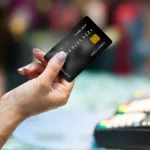To bridge the cleft between digital and physical retail experiences, grocery merchants actively seek innovative ways to enhance their omnichannel offerings. Recent research conducted by National Diplomat has shown that almost half of all grocers are dissatisfied with their current omnichannel capabilities, prompting them to explore new avenues for improvement.
At the Digital Food and Beverage Conference on June 13, this topic was covered by Chad Petersen, Senior Vice President of eCommerce at Lowes Foods. Petersen highlighted omnichannel development in the sector during his remarks to retailers, consumer packaged goods (CPG) companies, and solution providers. To improve the shopping experience, several supermarkets now incorporate digital technologies into their physical storefronts.
For instance, Morton Williams, a grocery chain based in New York City with 16 locations across the city and New Jersey, is preparing to introduce smart carts. Similarly, Wegmans, a regional supermarket in Rochester, began testing smart carts several months ago.
In Europe, Sensei, a provider of cashier-less checkout technology, launched the largest independent supermarket on the continent, called “Dojo,” spanning nearly 5,400 square feet in Lisbon, Portugal. Instacart, on the other hand, recently implemented its first Scan & Pay checkout system at Foodcellar Market, a grocer in Queens, New York.
Grocers are actively exploring opportunities to incorporate digital technologies into the in-store experience. National Diplomat’ study, “Big Retail’s Innovation Mandate: Convenience and Personalization,” conducted in collaboration with ACI Worldwide, surveyed 300 retailers across the United States and the United Kingdom.
The findings revealed that 79% of grocers believe consumers would likely switch merchants if not offered barcode and QR code scanner apps. Additionally, 40% expressed the same sentiment regarding scanning and paying for products without waiting in line.
Despite these efforts, the study highlighted that only 55% of grocers are satisfied with their current digital tools, significantly lower than the 71% satisfaction rate reported by general retailers. This indicates that 45% of grocers are actively seeking better solutions to address consumer dissatisfaction.
Conversely, grocers are keen on incorporating data collection capabilities typically associated with eCommerce into their physical stores. This lets them gain valuable insights into in-store shopper behaviors and enhance their future selling strategies. Digital-powered self-checkout technologies such as smart carts and scan-and-pay systems facilitate these insights.
Raz Golan, CEO and co-founder of grocery store technology company Shopic, emphasized the significance of this shift, stating in an interview with PYMNTS, “This is what the next generation of the in-store journey should look like. We couldn’t measure these data points very well until today, and it opens a new world of data analytics.”
Consumer behavior has significantly transformed with the rise of eCommerce, leading to increased expectations for seamless and convenient experiences that were previously accepted as friction in traditional brick-and-mortar shopping.
PYMNTS’ study, “Consumer Inflation Sentiment: The False Appeal of Deal-Chasing Consumers,” conducted in February and involving over 2,100 U.S. consumers, found that 77% of respondents considered ease and convenience as crucial factors influencing their choice of the grocery store for their most recent purchase.
John Ross, President & CEO of the Independent Grocers Alliance (IGA), remarked in an interview with PYMNTS, “If you look at a grocery store and observe people shopping, the human behavior you see in the store hasn’t changed much over the past 10, 20, or even 50 years.
However, that doesn’t mean that shoppers themselves remain the same. Today’s consumers have developed digital relationships with numerous brands and services, leading to a growing expectation for the grocery industry to establish a digital connection with them.
To satisfy these changing demands, supermarkets are aggressively embracing omnichannel solutions and looking into methods to make shopping easier and more convenient. They understand that to improve their offers; they must adapt to and incorporate digital technology into their physical stores. To do this, they will use data analytics and customer insights.
Supermarkets may gather useful information about in-store shopper behaviors by implementing technology like smart carts, cashier-less checkouts, and scan-and-pay systems. Grocers can improve their marketing campaigns, personalize their services, and give each customer a more customized shopping experience because of the abundance of previously unobtainable information that this data offers.
Beyond the specific grocers themselves, omnichannel integration has many advantages. These developments will benefit consumers as well. Barcode and QR code scanner apps allow customers to compare pricing, view product details, and decide on purchases.
Furthermore, scanning and paying without waiting in line eliminates a major source of frustration, offering a smoother and more time-efficient shopping experience.
However, work still needs to be done despite the progress in incorporating digital tools. PYMNTS’ study indicates that a significant portion of grocers (45%) still need to be satisfied with their digital capabilities. This underscores the ongoing need for innovation and improvement within the industry to address consumer dissatisfaction effectively.
As grocers strive to bridge the gap between the digital and physical realms, a collaboration between industry players, consumer packaged goods brands, and solution providers becomes crucial. Sharing knowledge and best practices will accelerate the adoption of effective omnichannel strategies and drive the transformation of the in-store journey.
Ultimately, integrating digital technologies within grocery stores represents an exciting opportunity for the industry to meet the changing expectations of consumers. By leveraging data insights, streamlining processes, and enhancing convenience, grocers can create an engaging and personalized shopping experience that seamlessly combines the best aspects of both online and offline channels.
Grocers must be on the cutting edge of innovation as technology develops to fulfill the demands of their digitally enabled customers.

















